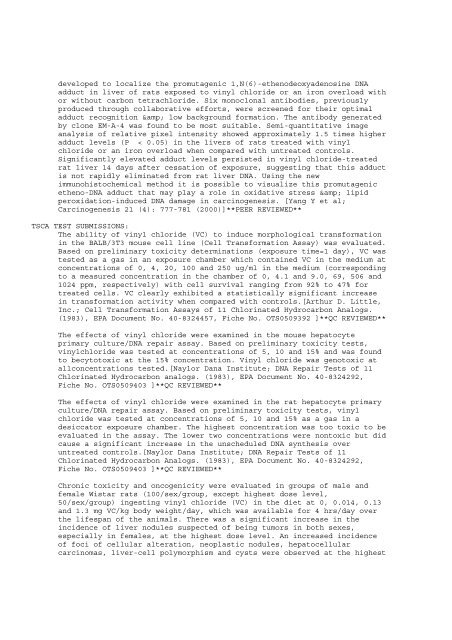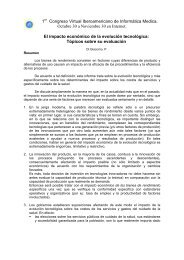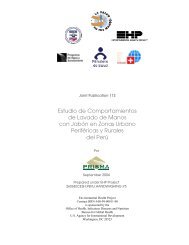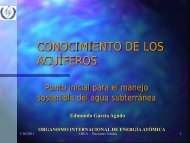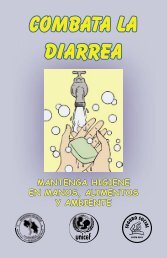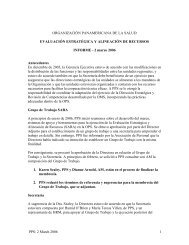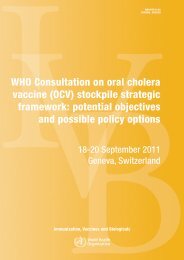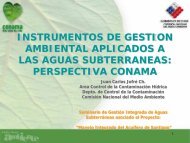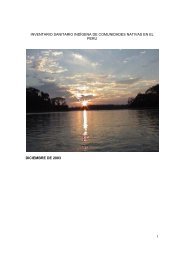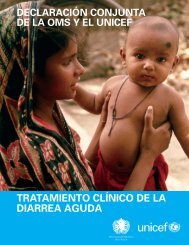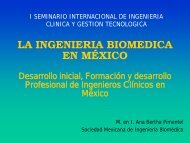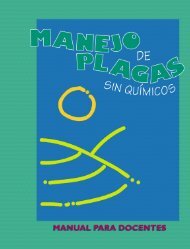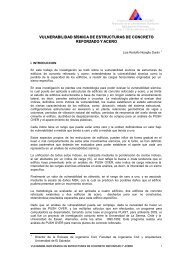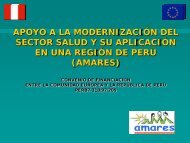a database of the National Library of M
a database of the National Library of M
a database of the National Library of M
You also want an ePaper? Increase the reach of your titles
YUMPU automatically turns print PDFs into web optimized ePapers that Google loves.
developed to localize <strong>the</strong> promutagenic 1,N(6)-e<strong>the</strong>nodeoxyadenosine DNAadduct in liver <strong>of</strong> rats exposed to vinyl chloride or an iron overload withor without carbon tetrachloride. Six monoclonal antibodies, previouslyproduced through collaborative efforts, were screened for <strong>the</strong>ir optimaladduct recognition & low background formation. The antibody generatedby clone EM-A-4 was found to be most suitable. Semi-quantitative imageanalysis <strong>of</strong> relative pixel intensity showed approximately 1.5 times higheradduct levels (P < 0.05) in <strong>the</strong> livers <strong>of</strong> rats treated with vinylchloride or an iron overload when compared with untreated controls.Significantly elevated adduct levels persisted in vinyl chloride-treatedrat liver 14 days after cessation <strong>of</strong> exposure, suggesting that this adductis not rapidly eliminated from rat liver DNA. Using <strong>the</strong> newimmunohistochemical method it is possible to visualize this promutagenice<strong>the</strong>no-DNA adduct that may play a role in oxidative stress & lipidperoxidation-induced DNA damage in carcinogenesis. [Yang Y et al;Carcinogenesis 21 (4): 777-781 (2000)]**PEER REVIEWED**TSCA TEST SUBMISSIONS:The ability <strong>of</strong> vinyl chloride (VC) to induce morphological transformationin <strong>the</strong> BALB/3T3 mouse cell line (Cell Transformation Assay) was evaluated.Based on preliminary toxicity determinations (exposure time=1 day), VC wastested as a gas in an exposure chamber which contained VC in <strong>the</strong> medium atconcentrations <strong>of</strong> 0, 4, 20, 100 and 250 ug/ml in <strong>the</strong> medium (correspondingto a measured concentration in <strong>the</strong> chamber <strong>of</strong> 0, 4.1 and 9.0, 69, 506 and1024 ppm, respectively) with cell survival ranging from 92% to 47% fortreated cells. VC clearly exhibited a statistically significant increasein transformation activity when compared with controls.[Arthur D. Little,Inc.; Cell Transformation Assays <strong>of</strong> 11 Chlorinated Hydrocarbon Analogs.(1983), EPA Document No. 40-8324457, Fiche No. OTS0509392 ]**QC REVIEWED**The effects <strong>of</strong> vinyl chloride were examined in <strong>the</strong> mouse hepatocyteprimary culture/DNA repair assay. Based on preliminary toxicity tests,vinylchloride was tested at concentrations <strong>of</strong> 5, 10 and 15% and was foundto becytotoxic at <strong>the</strong> 15% concentration. Vinyl chloride was genotoxic atallconcentrations tested.[Naylor Dana Institute; DNA Repair Tests <strong>of</strong> 11Chlorinated Hydrocarbon analogs. (1983), EPA Document No. 40-8324292,Fiche No. OTS0509403 ]**QC REVIEWED**The effects <strong>of</strong> vinyl chloride were examined in <strong>the</strong> rat hepatocyte primaryculture/DNA repair assay. Based on preliminary toxicity tests, vinylchloride was tested at concentrations <strong>of</strong> 5, 10 and 15% as a gas in adesiccator exposure chamber. The highest concentration was too toxic to beevaluated in <strong>the</strong> assay. The lower two concentrations were nontoxic but didcause a significant increase in <strong>the</strong> unscheduled DNA syn<strong>the</strong>sis overuntreated controls.[Naylor Dana Institute; DNA Repair Tests <strong>of</strong> 11Chlorinated Hydrocarbon Analogs. (1983), EPA Document No. 40-8324292,Fiche No. OTS0509403 ]**QC REVIEWED**Chronic toxicity and oncogenicity were evaluated in groups <strong>of</strong> male andfemale Wistar rats (100/sex/group, except highest dose level,50/sex/group) ingesting vinyl chloride (VC) in <strong>the</strong> diet at 0, 0.014, 0.13and 1.3 mg VC/kg body weight/day, which was available for 4 hrs/day over<strong>the</strong> lifespan <strong>of</strong> <strong>the</strong> animals. There was a significant increase in <strong>the</strong>incidence <strong>of</strong> liver nodules suspected <strong>of</strong> being tumors in both sexes,especially in females, at <strong>the</strong> highest dose level. An increased incidence<strong>of</strong> foci <strong>of</strong> cellular alteration, neoplastic nodules, hepatocellularcarcinomas, liver-cell polymorphism and cysts were observed at <strong>the</strong> highest


